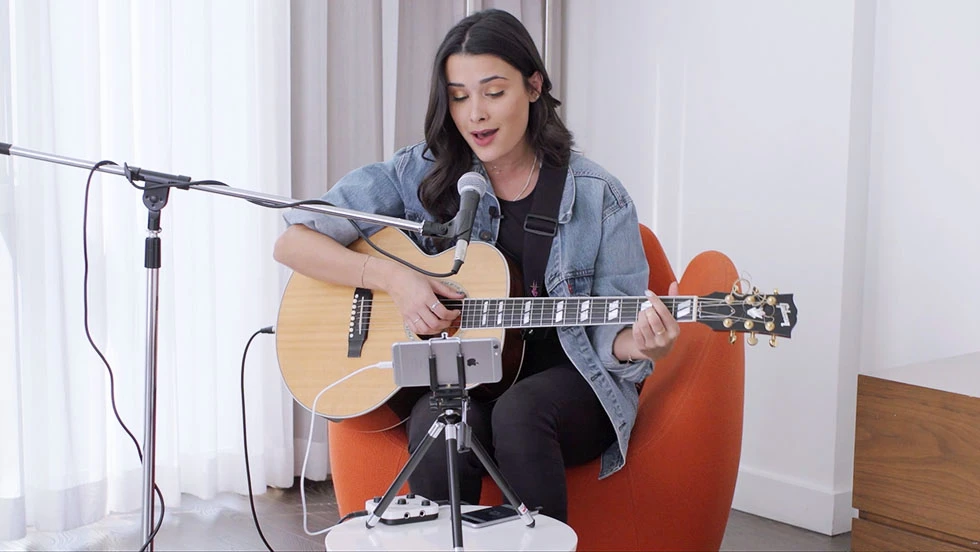Though modern smartphone cameras can deliver in the video department for home-cooked musicians hoping to go viral on YouTube or dedicated vloggers, video reviewers and online tutorial makers, the device's audio recording prowess may well disappoint. Roland launched a pocket device at CES back in January that's designed to help. The Go:Mixer, which is now available to buy, allows users to capture a high quality audio track at the same time the video is recorded, and mix in vocals, instruments and backing music on the fly.
The Go:Mixer has been designed with the sole purpose of giving the audio track on smartphone videocasts a quality bump, with Roland promising a "marked upgrade" over a smart device's built-in mono mic. It's compatible with iOS and Android smartphones and is ready to roll out of the box.
The 3.75 x 3.75 x 1.1 in (95 x 95 x 28 mm), 4 oz (100 g) pocket mixer is cabled up rather than going wireless, drawing its power from the smart device (so users may want to keep a weather eye on host battery levels), and a user just needs to launch a favored camera/video app to get the recording session started.
Mixing knobs up top can be used to combine up to five input sources at once, meaning users can plug in a guitar or bass, supply beats or drone sounds with a digital keyboard, feed in vocals and run backing tracks from music players. There's no phantom power available though, so care will need to be taken when choosing microphones.

There's a function that reduces the volume of the main vocal in a song played through the device, giving the user the opportunity to take lead vocals in karaoke fashion, and a stereo output jack is included for headphone monitoring or to output the mix to a powered speaker.
Rather than hooking up expensive and complicated audio recording hardware to a videocast setup, and then wasting precious time getting everything to sync up in video editing software, the Go:Mixer digitally transfers audio straight to a smartphone video recording in real time. Neat.
The Go:Mixer comes supplied with USB/Lightning cables and is available now for a street price of US$99.
Source: Roland








